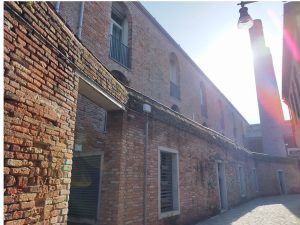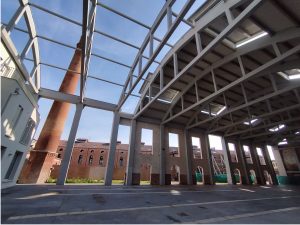To understand the role of beads in nineteenth century East Africa and their changing trends and patterns of circulation, we decided to travel back, along the commodity chain, to the sites of their
production. The picture portraits a newly conceived multi-functional space, half residential complex half public square, on the picturesque island of Murano, in the Venice lagoon.
To understand the role of beads in nineteenth-century East Africa and their changing trends and patterns of circulation, we decided to travel back, along the commodity chain, to the sites of their production. The picture portrays a newly conceived multi-functional space, half residential complex, half public square, on the picturesque island of Murano in the Venice lagoon.
This fascinating example of urban renewal, paired with industrial archaeology, used to be the biggest complex dedicated to the production of the “coterie” (this is what colourful glass beads produced in Venice were called). It is the most tangible manifestation of the Società Veneziana per l’Industria delle Conterie, a syndicate of 14 glass-makers that, in 1898, came together in order to remain relevant in the face of the increasingly competitive global trade taking shape at the end of the nineteenth century.
After changing the name in Società Veneziana Conterie e Cristallerie in 1937, the company was liquidated in 1993, and the furnaces were finally abandoned. But this is another story, that takes us very far from the focus of our research. Our journey will start from here to dive into the fascinating history of the 19th-century production, distribution and circulation of glass beads, from Murano and Venice to the African shores of the Indian Ocean and the Red Sea.


